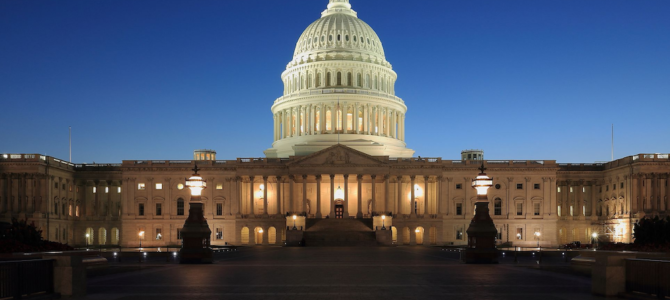
President Donald Trump’s 2017 speech in Warsaw, Poland, which packed some of the strongest sentences uttered by an American president, was a sign of things to come. Here’s an unabashedly pro-Western administration, which after decades is proud enough to stand and say that yes, objectively, there’s merit in the classic Western canon, literature, art, architecture, music, and society.
Opposed to that are the “intellectuals,” who think Bernini’s “Rape of Proserpina” is qualitatively similar to a banana taped to the wall, and Bach’s Matthäus-Passion is practically indistinguishable to whatever in God’s name this is.
“We write symphonies. We pursue innovation. We celebrate our ancient heroes, embrace our timeless traditions and customs, and always seek to explore and discover brand-new frontiers” Trump said, adding, “The fundamental question of our time is whether the West has the will to survive. … I declare today for the world to hear that the West will never, ever be broken. Our values will prevail. Our people will thrive. And our civilization will triumph.”
That speech, one of the strongest defenses of Western civilization and conservatism as a whole, led the liberal commentariat to go apoplectic. Now that classical culture war is back with a vengeance. The ostensible reason is the new guideline, a potential executive order to ensure all federal buildings follow classical architecture.
No, Classical Architecture Isn’t Authoritarian
“Fascism foreshadowed: Trumpistas seek to legislate a bulbous classicism. Next stop: calling out Degenerate Art. We’ve seen this movie before,” tweeted Leonard Bernardo, vice president of the George Soros-funded Open Society Foundation. He linked to a New York Times editorial that bizarrely claimed modernist architecture is liberating and that “style functions as a symbol of pride, or a tool of oppression and colonialism, from which modernism, with its transparent glass and technical innovation, promised escape and liberation.” An art Ph.D. student equated Trump to mass murderer Joseph Stalin, claiming Stalin loved classical architecture. Artnet wrote that the executive order echoed fascism.
A “historian” — of gender and race — from Yale tweeted, “This may not seem like the most dangerous thing we face, but it’s one of the warning signs of fascism and…wait for it…genocide. The cult of antiquity & the imposition of monuments to a nation’s mythical glorious past precede both of those disasters.”
Wired ran an op-ed claiming this is the most authoritarian thing the administration has done. The Atlantic ran a bizarre apologia of brutalist and deconstructivist architecture, and to top it all off, Binyamin Appelbaum of The New York Times tweeted a thread about the “excellence” of modernism, which I am sure would do more to convert people to classical architecture. I hate to use the dichotomy of friends and enemies of the civilization in politics, but when you read editorials such as these, you can be forgiven for having second thoughts.
This move was long overdue and follows a British government policy named “Building Better, Building Beautiful,” headed by the late Sir Roger Scruton, who was working to make British government buildings classical again in a project notorious for the amount of vitriol it drew from the British left. The common charge was that Scruton was a right-wing reactionary.
The new directive in Washington is also spearheaded by the National Civic Art Society. Its chairman, Marion Smith, was quoted in The New York Times saying, “For too long architectural elites and bureaucrats have derided the idea of beauty, blatantly ignored public opinions on style, and have quietly spent taxpayer money constructing ugly, expensive, and inefficient buildings. This executive order gives voice to the 99 percent — the ordinary American people who do not like what our government has been building.”
Smith is correct. If any Western leader runs on this campaign, with a popular referendum on which style of buildings the average person likes, classical or modernist, he would win in a landslide. The hostility to the classical canon is ideological, not economic.
How the Beauty Rebellion Began
The war against classical conservative traditions started a long time ago with both revolutionary and totalitarian art, which sought to break free from the traditional hierarchical Christian influence in Europe. It was reflected on both sides: a desire to flatten human existence, to relativize the very concept of glory and beauty.
If there’s nothing to look up to, nothing that is objectively beautiful, no glory to be achieved, and no sacrifices made to achieve that glory, there’s no ambition and no human existence. We are all relegated to the status of the “unknown citizen.” The classical Western tradition based on the Imago Dei glorified beauty, and modernism, whether liberal or Marxist, opposed that. Beauty, after all, cannot be objective or divine because that would imply not everything is the same, an idea that goes against a core belief of both Marxist and liberal egalitarianism.
Everything in the early 20th century was therefore a rebellion against the concept of beauty. Nothing in art, architecture, painting, or music was sacred. Everything can be profane due to a lack of objective truth or beauty. This was reflected in the paintings of Käthe Kollwitz and in the gigantic, gray, soulless planned buildings of Le Corbusier.
In 1924, in his most influential book “Towards a New Architecture,” Le Corbusier wrote, “We must create a mass-production state of mind: A state of mind for building mass-production housing. A state of mind for living in mass-production housing. A state of mind for conceiving mass-production housing.” He went on to work for both Stalin and Vichy France.
That continued and got institutionalized in the late ’50s, when German Marxist and critical theorist Theodor Adorno designed a pseudoscientific scale to measure “authoritarian tendencies.” According to this idea, anything conservative, from an appreciation of hierarchy or authority to an appreciation for classical Western heritage, is a desire to be fascist. This is the root for all the critical theory-influenced polity you see on the left these days. With one swift stroke, anything Western and classical was made synonymous with fascism, even when the most totalitarian architecture was designed on purpose to eradicate hierarchy.
People Are Drawn to Classical Architecture
From actually fascist Casa del Fascio in Italy, to Palast der Republik in communist East Germany, to the Ville Radieuse of Le Corbusier, the only common theme was a flattening gray totalitarianism, a Mordor-lite hellscape with no greens, no children, no family, and of course, no divine nor aspiration to achieve any higher immortal glory. From brutalism to deconstructionism, all subsequent architectural styles continued this tradition.
Columns, arches, and spires are glorious. The West, after two world wars, was not. The civilization is declining and doomed, and therefore, nothing glorious should be reflected in Western architecture other than gray, flattening monotone.
Unfortunately for these new architectural totalitarians, common people like heritage and classics. There’s a Bilbo Baggins in all of us. In one of my favorite anecdotes, a close friend of mine, liberal to the core, asked me what I liked most when I visited D.C. When I mentioned the interior of the Library of Congress because it is the most Romanesque of interiors I saw outside Europe, she said she hoped I like it because it is glorious, evocative of the new Rome on the banks of the Potomac.
Architecture needs to reflect civilizational glory, from the Taj Mahal to the Hagia Sophia, Notre Dame, Westminster Abbey, and the U.S. Capitol. Take a blind survey, and give people a choice between the U.S. Capitol and the eyesore art museums blocking the view, and see how many people choose which. The movement to bring back classical architecture in both Britain and the United States is long overdue and a step in the right direction. It is time to bring down the gray totalitarians and their depressing and flattening, egalitarian, 20th-century ideas.









